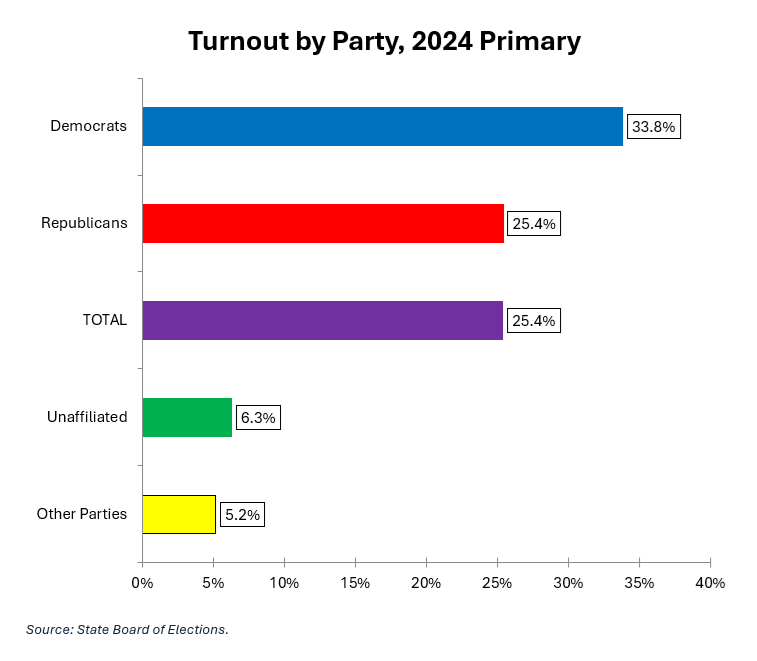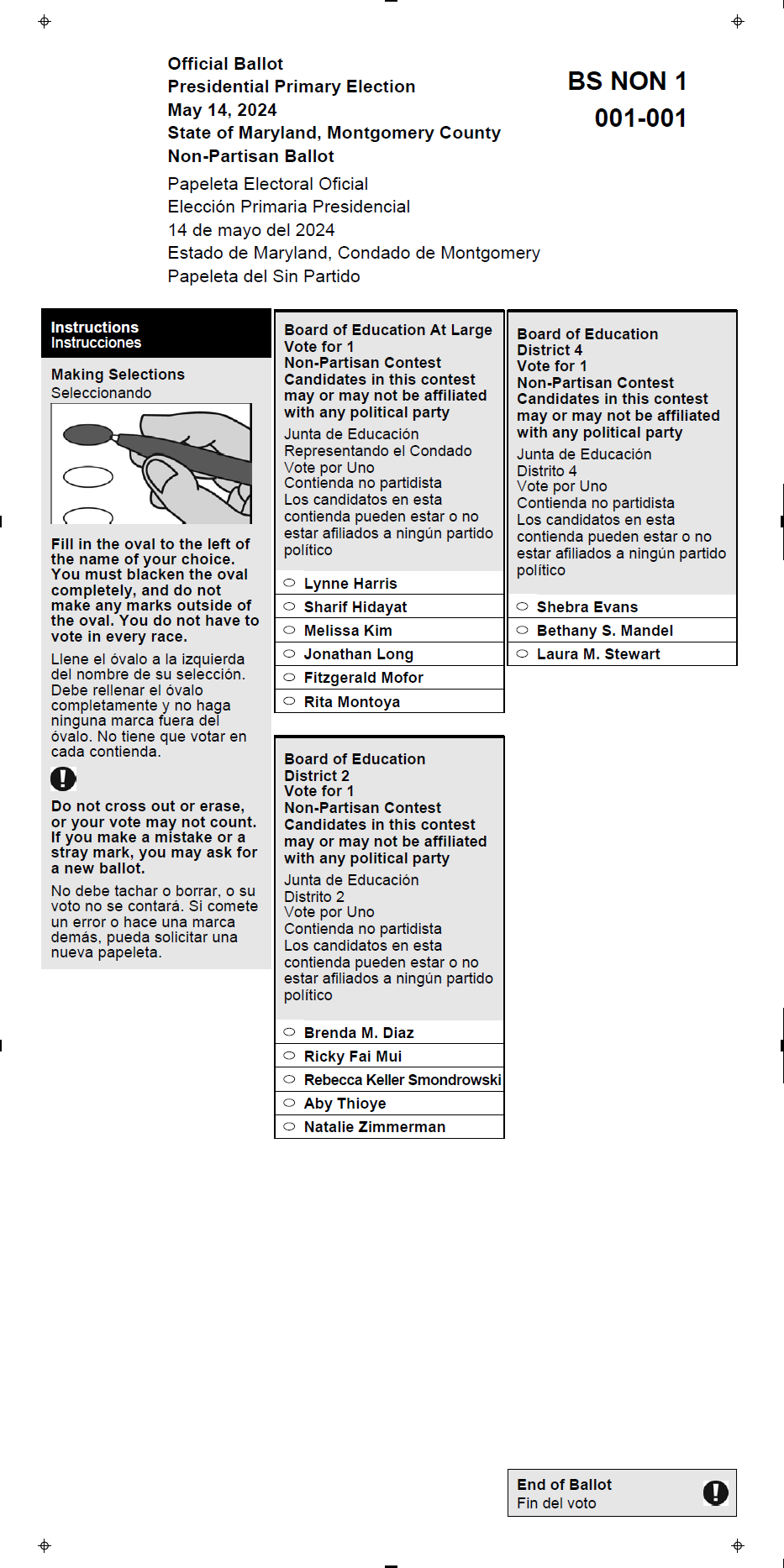By Adam Pagnucco.
Part One introduced the premise of this series: the use of cast vote records to examine partisan differences in voting in the 2024 school board primary. Now let’s examine who actually voted in the primary.
Unlike elections for partisan offices like governor, state legislature, county executive and county council, members of all parties as well as unaffiliated voters get to vote in school board primaries (as well as general elections). In this primary, the percentage of eligible voters by party was 59% Democratic, 14% Republican and 26% unaffiliated and small party members. However, the turnout rates among these voters differed a lot. Those rates are shown below as they were printed in a prior post.

The product of the eligibility percentages and turnout rates produced the following distribution of actual voters in the primary, again printed in a prior post.

The distribution of votes cast for school board was close to but not identical to all actual voters because many voters did not vote for school board candidates. (We will discuss that more later in the series.) Among the votes cast for school board candidates, 79% came from Democrats, 14% came from Republicans and 7% came from unaffiliated voters and members of small parties.
Why did unaffiliated and small party voters account for 26% of eligible voters but only 7% of school board voters? One reason is that voters who are not Democrats and Republicans don’t get to vote for candidates in those parties’ primaries in Maryland, a practice called closed primary voting. In effect, they can only vote for school board candidates. Check out the ballot proof for an unaffiliated voter in Montgomery County Precinct 1-1 shown below.

And so while Democrats accounted for a large majority of school board primary voters, non-Democrats cast enough votes to matter in close contests. This cannot be ignored by the candidates or other groups playing in school board races, especially the teachers union. This series will show how members of different parties often voted differently in this year’s school board primary. We will have more next.
